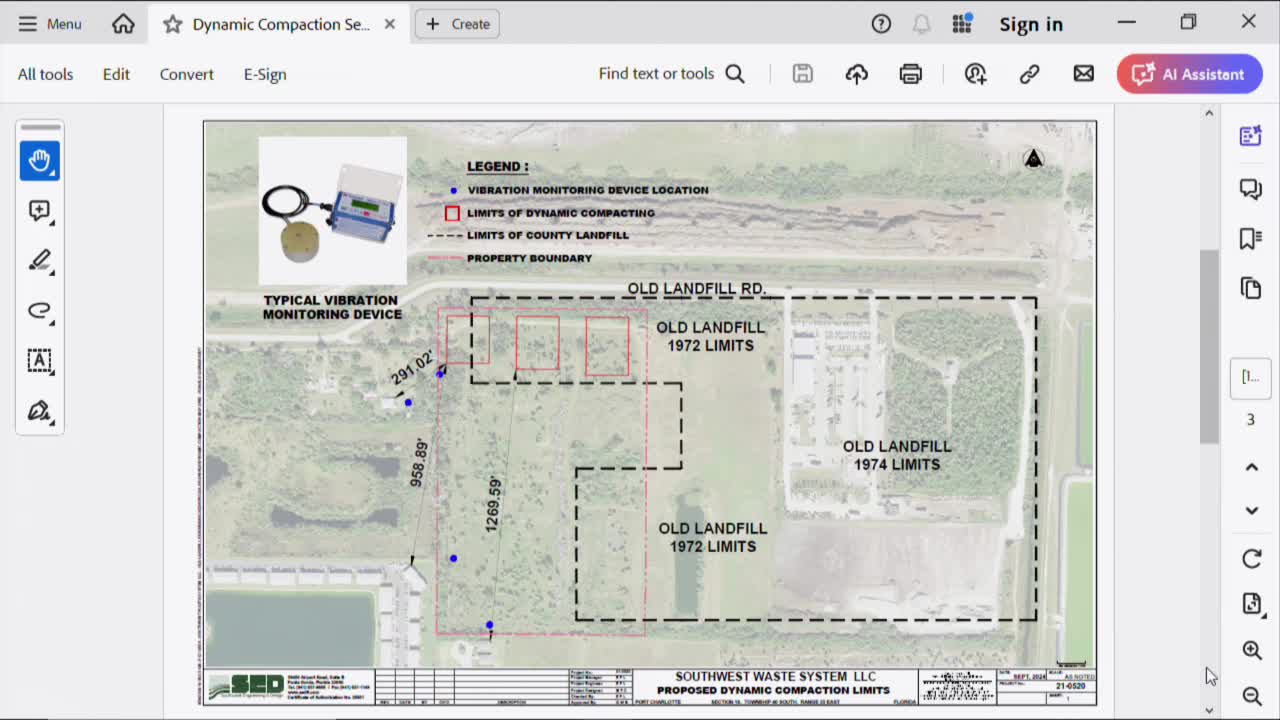Dynamic compaction plan sparks community concerns over vibrations
September 24, 2024 | Charlotte County, Florida
This article was created by AI summarizing key points discussed. AI makes mistakes, so for full details and context, please refer to the video of the full meeting. Please report any errors so we can fix them. Report an error »

In a recent government meeting, officials discussed the implementation of dynamic compaction at a landfill site, emphasizing the importance of vibration monitoring to protect nearby structures. The proposed plan adheres to Florida Department of Transportation specifications, which require continuous monitoring of vibration levels during operations. A device capable of detecting vibrations as low as 0.01 inches per second will be strategically placed at four locations around the site, including property lines and near residential areas. Operations will cease if vibrations exceed 0.5 inches per second, prompting an assessment of potential damage.
Chris Woods, a contractor with extensive experience in dynamic compaction, outlined the pre-construction process, which includes surveying nearby structures to document their conditions before work begins. This proactive approach aims to prevent damage by understanding how vibrations dissipate with distance. Monitoring will be continuous, with portable devices used to track vibration levels in real-time, and alerts will be sent for elevated levels.
The discussion also touched on stormwater management, with proposals for monitoring wells to assess water quality in the area. The contractor confirmed that dynamic compaction would only occur in designated areas, not across the entire site, to minimize impact.
Commissioners raised concerns about the proximity of the project to residential neighborhoods, particularly regarding hours of operation and potential disturbances. The contractor indicated that operations would typically run from 6 AM to 8 PM on weekdays and 8 AM to noon on Saturdays, but expressed willingness to consider adjustments to accommodate community concerns.
Overall, the meeting highlighted the careful planning and monitoring measures intended to mitigate the impact of construction activities on surrounding residents, while also addressing the need for effective stormwater management.
Chris Woods, a contractor with extensive experience in dynamic compaction, outlined the pre-construction process, which includes surveying nearby structures to document their conditions before work begins. This proactive approach aims to prevent damage by understanding how vibrations dissipate with distance. Monitoring will be continuous, with portable devices used to track vibration levels in real-time, and alerts will be sent for elevated levels.
The discussion also touched on stormwater management, with proposals for monitoring wells to assess water quality in the area. The contractor confirmed that dynamic compaction would only occur in designated areas, not across the entire site, to minimize impact.
Commissioners raised concerns about the proximity of the project to residential neighborhoods, particularly regarding hours of operation and potential disturbances. The contractor indicated that operations would typically run from 6 AM to 8 PM on weekdays and 8 AM to noon on Saturdays, but expressed willingness to consider adjustments to accommodate community concerns.
Overall, the meeting highlighted the careful planning and monitoring measures intended to mitigate the impact of construction activities on surrounding residents, while also addressing the need for effective stormwater management.
View full meeting
This article is based on a recent meeting—watch the full video and explore the complete transcript for deeper insights into the discussion.
View full meeting